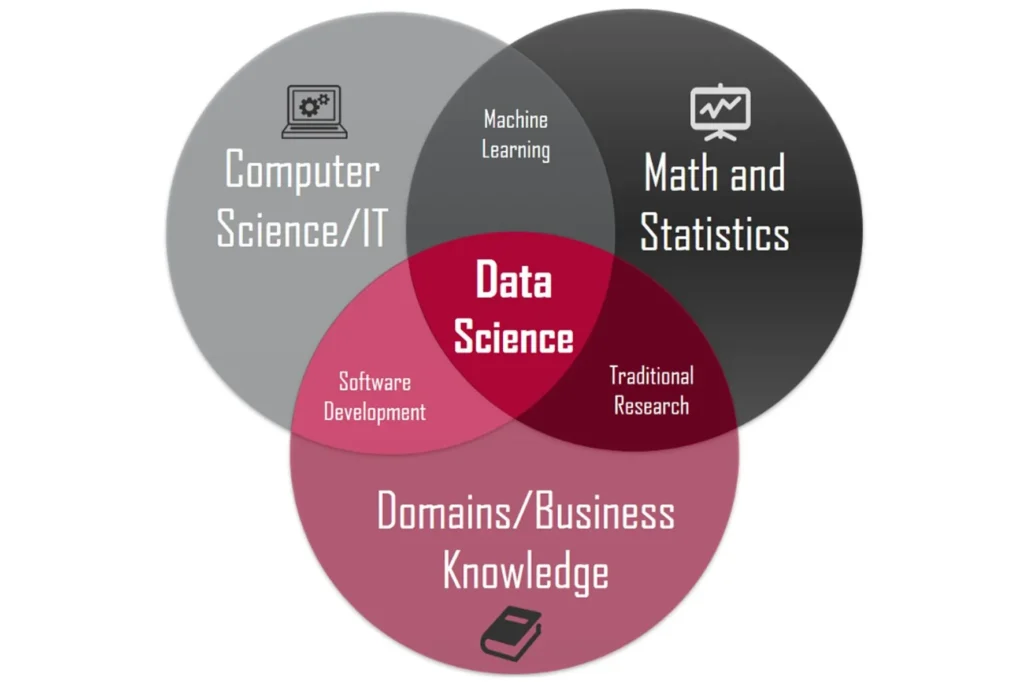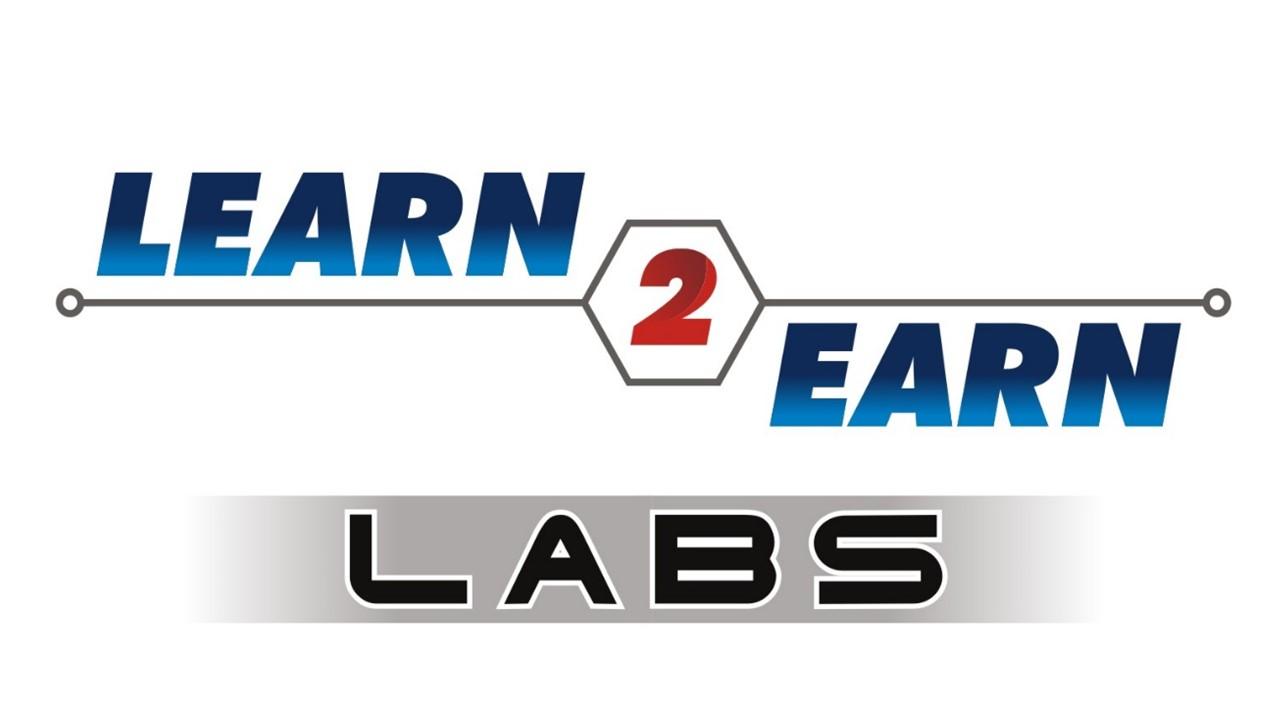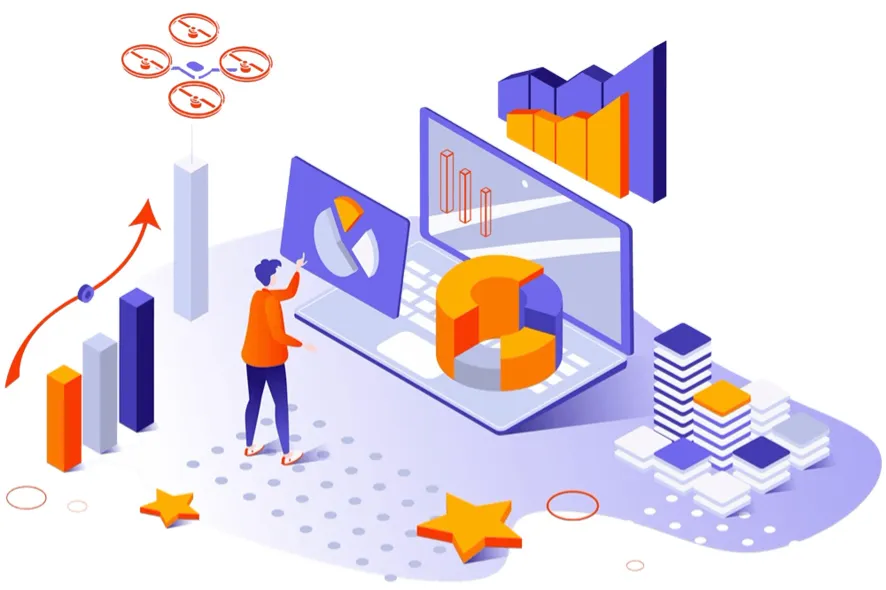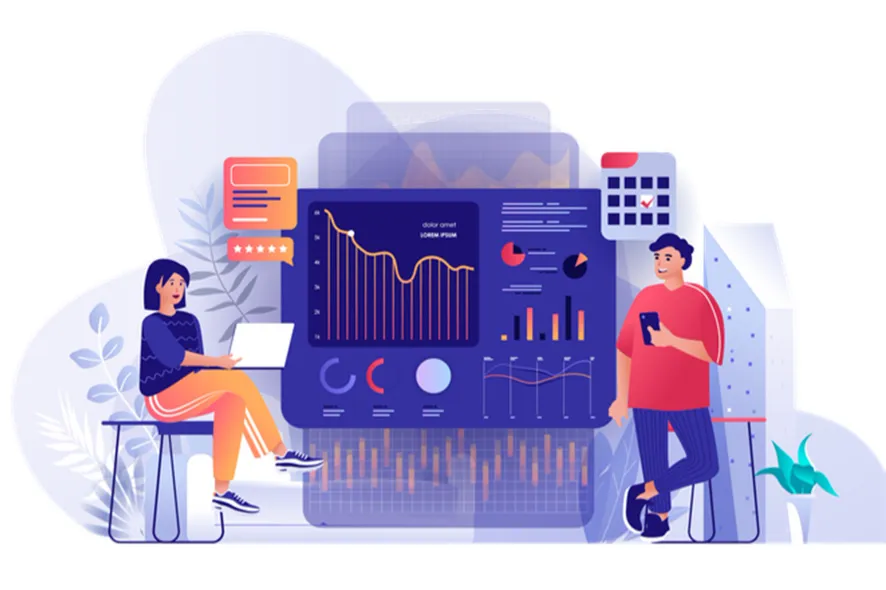
Become an expert in
Data Science and Machine Learning Using JavaScript
With Job Assistance
Why choose Data Science and Machine Learning as your career path?
Versatility Across Platforms
JavaScript is widely used for both frontend and backend development. With libraries like TensorFlow.js and Brain.js, you can implement machine learning models directly in web browsers, enabling real-time data processing and analysis on client-side applications.
Integration with Web Technologies
JavaScript seamlessly integrates with web technologies, making it ideal for deploying machine learning models in web-based applications. You can create interactive dashboards, visualizations, and AI-driven features for websites and web apps.
Growing Ecosystem and Community
The JavaScript ecosystem is vast and constantly evolving. With a large community, extensive resources, and numerous open-source libraries, learning and applying JavaScript in data science and machine learning is easier and highly supported.
High Demand for Full-Stack Expertise
Combining data science and machine learning skills with JavaScript gives you a unique edge as a full-stack developer. Companies value professionals who can develop, deploy, and manage AI-powered applications end-to-end, from model creation to user interface integration.
Training Roadmap
DS / ML Engineer using JavaScript
With rapid technological advancement, businesses increasingly use Data Science and Machine Learning using JavaScript to transform data into actionable insights. This course equips professionals to analyze large datasets, deploy machine learning models in web applications, and create interactive visualizations, enabling data-driven decisions and enhanced business performance.
JavaScript Basics and Core Concepts
Data Manipulation and Processing
Data Visualization
Machine Learning Fundamentals
Web-Based AI Model Deployment
Project-Based Learning
Career Options After Completing Data Science and Machine Learning Course using JavaScript
As a data science and machine learning professional, you will have a diverse range of job opportunities to work and get success in your career.
Middle-Level Career Options
After successfully completing of training, you can apply for various job roles, like
- Data Analyst
- Machine Learning Engineer
- Full-Stack Developer with AI Expertise
- Business Intelligence Developer
- AI Application Developer
- Data Visualization Specialist
Top-Level Career Options
After two to five years of experience, you can apply for job roles, like
- Data Scientist
- AI Architect
- Machine Learning Specialist
- Lead Data Engineer
- Chief Data Officer (CDO)
- AI Research Scientist
Data Science and Machine Learning Using JavaScript Training Program
This course is designed to equip students with the skills and hands-on experience needed to analyze data effectively and derive actionable insights. It focuses on implementing machine learning models using JavaScript to support informed decision-making. Through practical applications and advanced techniques, students gain expertise to solve complex problems and drive data-driven strategies in web-based environments.

Practice-Based Training
Training program available for 12 months duration

Dummy Projects
To build your hands-on expertise & portfolio

Resume Building Assistance
To create an attractive resume for you

Interview Preparation
So you can present yourself in a better way

Mentoring & Job Assistance
To help you in getting good career or placements
Who Can Join
- Graduates or postgraduates from B.Tech or M.Tech (any specialization), BCA, MCA, B.Sc., or M.Sc. (CS/IT/Mathematics) with strong mathematical, statistical, and analytical thinking skills are eligible to join the Data Science and Machine Learning training program.
- Working professionals from computer science or IT backgrounds with a solid foundation in mathematics, statistics, and reasoning, seeking career advancement, salary hikes, or promotions, can also benefit from this program.
Training Mode
Online Live Classes are also available
- 4x more effective way of learning
- Hands-on experience with projects & assignments
- Virtual class with real interaction with trainer
- Monitoring support & troubleshooting issues
- Masterclass from industry experts & leaders
- Live class recordings for revision purposes
Data Science & Machine Learning Training in Agra
Learn2Earn Labs
F-4, First Floor, Anna Ikon Complex, In Front of Deviram Food Circle, Sikandra-Bodla Road, Sikandra, Agra, Uttar Pradesh – 282007
Call: +91-9548868337
Program Details
Feel free to call
Request More Information
During this training, you will explore programming methodologies, data models, logic building, transitions, JavaScript libraries, code implementation, mathematical concepts, assignments, and mini projects to help you become an expert in Data Science and Machine Learning. You will gain hands-on expertise in the most in-demand concepts, libraries, and tools, equipping you for success in this field.
Introduction to JavaScript, History and Role of JavaScript, Evolution of JavaScript and its modern-day applications., Importance of JavaScript in data science and machine learning.; Setting up the Development Environment - Installing and configuring Node.js and npm., Working with JavaScript in the browser console vs. on the server; Running JavaScript Scripts - Executing scripts in Node.js, Using REPL for quick experimentation; Variables and Constants - Scoping rules of var, let, and const, Best practices for using variables in data-driven applications; Data Types - Primitive data types: String, Number, Boolean, Null, Undefined, Complex data types: Arrays and Objects, Type conversion and type coercion; Operators and Expressions - Arithmetic, comparison, logical, and bitwise operators, Ternary operator and short-circuiting logic; Control Flow, Conditional Statements - if, else if, else, and switch statements, Practical examples for decision-making in data workflows; Loops - Iteration using for, while, and do-while loops, Functional looping methods: forEach, map, filter; Functions - Defining and invoking functions, Parameterized functions and default values; Arrow functions and function expressions, Higher-order functions: practical use cases with map, filter, and reduce; Error Handling & Error Management - Handling runtime errors using try, catch, and finally, Throwing and catching custom errors, Debugging and understanding the error stack trace.
Object-Oriented Programming, Classes and Objects - Defining classes and creating objects, Constructor functions and instance methods; Prototypes and Inheritance - Prototype chaining and prototypal inheritance, ES6 class-based inheritance; Encapsulation and Abstraction - Private and public members in classes, Abstracting logic with methods; Asynchronous JavaScript, Promises and Async/Await - Creating and resolving promises, Chaining promises and handling errors, Async functions and await for cleaner asynchronous code; Working with APIs - Fetching data using fetch and Axios, Managing HTTP methods: GET, POST, PUT, DELETE, Handling response and errors effectively; Asynchronous Data Flow - Managing data streams with async iterators, Real-time data handling basics; Data Structures, Array Operations - Array manipulations: push, pop, shift, unshift, splice, Iterating with map, filter, reduce, Advanced Data Structures - Linked Lists: Implementation and traversal, Stacks and Queues: LIFO and FIFO concepts, Sets and Maps: Use cases for unique and key-value data, Hash Tables: Concept and simple implementation; Algorithms – Sorting ( Bubble sort: Algorithm walkthrough and complexity analysis, Merge sort: Divide-and-conquer strategy, Quick sort: Partitioning and recursive sorting), Searching ( Linear search: Sequential element lookup, Binary search: Optimized search in sorted arrays).
What is Machine Learning? Understanding the concept of machine learning, The importance of machine learning in modern applications, Key principles of machine learning: Learning from data, Improving performance over time; Types of Machine Learning - Supervised Learning - Overview and real-world examples (e.g., email classification, spam detection), Characteristics: Labeled data, input-output relationships; Unsupervised Learning - Overview and examples (e.g., customer segmentation, clustering), Characteristics: Unlabeled data, discovering patterns; Reinforcement Learning - Overview and examples (e.g., game AI, robotics), Characteristics: Reward-based learning, trial-and-error; Applications of Machine Learning - Discussing various domains like healthcare, finance, e-commerce, and entertainment, Importance of JavaScript in enabling ML on the web and mobile platforms; Differences Between AI, ML, and Deep Learning, Artificial Intelligence (AI): Definition and overview, AI as a broader concept encompassing intelligent systems; Machine Learning (ML): Relationship between AI and ML, ML as a subset of AI focused on learning from data; Deep Learning (DL): Introduction to deep learning, DL as a specialized branch of ML using neural networks; Key Differences - Tabular comparison of AI, ML, and DL; Applications and limitations of each field; Overview of using JavaScript for ML compared to Python, Advantages of JavaScript: Web compatibility, real-time processing, cross-platform usage, Limitations of JavaScript in ML.
TensorFlow.js - Overview of TensorFlow.js as a JavaScript-based ML library, Key features: Training and deploying ML models in the browser or on Node.js, GPU acceleration using WebGL; Common use cases: Real-time image recognition, Text sentiment analysis; Installation and Setup - Basic steps to set up TensorFlow.js in browser and Node.js environments, Dependencies and compatibility requirements;; Brain.js - Overview of Brain.js as a lightweight neural network library, Key features: Simplicity and ease of use, Focused on feedforward neural networks and training; Common use cases: Predictive text, Basic pattern recognition;; Synaptic.js - Overview of Synaptic.js as a versatile and extensible neural network library, Key features: Support for multiple types of neural networks (e.g., feedforward, recurrent), Flexibility in defining custom architectures; Common use cases: Training simple networks for classification tasks, Experimenting with different architectures;; ML.js - Overview of ML.js as a general-purpose JavaScript machine learning library, Key features: Support for a wide range of ML algorithms, Focus on simplicity and browser compatibility; Common use cases: Basic regression and clustering, Preprocessing and data manipulation for ML.
Data Loading, Reading CSV files: Using PapaParse and csv-parser for CSV parsing, Handling large CSV files with streaming; Reading JSON files: Using fs module to read JSON files in Node.js, Parsing and working with JSON data in JavaScript; Reading Excel files: Introduction to libraries like SheetJS (xlsx) for Excel file parsing, Extracting data from specific sheets and ranges, Handling formulas and special formatting in Excel; Fetching Data from APIs - Introduction to REST APIs and how to make HTTP requests, Using Fetch API and Axios to retrieve data, Handling API responses (e.g., JSON, XML) and managing errors; Real-world use case: Fetching and processing data from public APIs (e.g., OpenWeather, COVID-19 datasets); Data Cleaning, Handling Missing Data - Detecting missing values in datasets, Strategies to handle missing data: Removing rows/columns with missing values, Imputing missing values using mean, median, or mode, Advanced techniques: predictive imputation and k-nearest neighbors imputation; Removing Duplicates - Identifying duplicate rows in datasets, Removing duplicates programmatically using JavaScript, Use case: Cleaning duplicate user records or entries in data logs; Data Normalization and Standardization - Understanding the importance of normalization and standardization, Techniques for normalization (min-max scaling), Techniques for standardization (z-score scaling), Implementing these techniques using JavaScript libraries like ml or custom code.
Feature Engineering, Encoding Categorical Variables - Introduction to categorical variables and their impact on ML models, Techniques for encoding: One-hot encoding, Label encoding, Frequency encoding, Implementing encoding using custom JavaScript or libraries (e.g., TensorFlow.js preprocessing utilities); Scaling Features - Importance of feature scaling in machine learning models, Methods for scaling: Min-max scaling, Standard scaling (z-score), Robust scaling for handling outliers; Use cases: Preparing datasets for linear regression and clustering algorithms; Creating New Features, Deriving new features from existing data: Aggregation (e.g., sum, average, count), Interaction terms (e.g., product of two features), Extracting date/time-related features (e.g., day, month, year, weekday); Feature extraction from text data: Tokenization and n-grams, Bag-of-words representation, Basic sentiment scoring, Feature creation for image data (basic introduction to pixel value manipulation). Practical Implementations - Case Studies ( Cleaning and normalizing e-commerce product data (e.g., handling missing prices, scaling product ratings), Fetching and processing real-time weather data from an API and preparing it for analysis, Engineering features from movie metadata (e.g., genres, release year, popularity scores), Integration with Machine Learning Libraries ( Preparing cleaned and processed datasets for training models in TensorFlow.js or ML.js, Exporting processed datasets to formats like CSV, JSON, or Excel for sharing or further analysis), Debugging and Optimization - Debugging common errors in data processing workflows, Optimizing large-scale data processing tasks using asynchronous programming and streams.
Importance of Data Visualization in ML and Data Science, Understanding the role of data visualization in communicating insights, How visualization helps in exploratory data analysis (EDA),Visualization for decision-making and storytelling, Importance of visualizations in debugging and improving ML models; Overview of different types of visualizations: Scatter plots, bar charts, line graphs, histograms, box plots, heatmaps, 3D plots; Guidelines for selecting the appropriate chart: Data types: categorical vs. numerical data, Key variables: relationships, comparisons, distributions, or trends; Avoiding misleading visualizations; Overview of JavaScript Libraries - Why use JavaScript for data visualization?, Comparison of popular libraries for visualization in JavaScript; D3.js (Data-Driven Documents) - Introduction to D3.js and its core principles, Key features: Binding data to DOM elements, Dynamic updates and transitions, Use cases: Custom, interactive visualizations for the web; Chart.js - Introduction to Chart.js as a simplified charting library, Key features: Easy-to-use API for creating standard charts, Built-in interactivity and responsive design, Use cases: Quick creation of bar charts, line graphs, pie charts; Plotly.js - Introduction to Plotly.js as an advanced visualization library, Key features: Support for high-level, interactive charts, Compatibility with 3D plots and dashboards, Use cases: Advanced visualizations for ML models and data dashboards.
Basic Visualizations - Scatter Plots (Use cases: Displaying relationships between two variables, Enhancing scatter plots with color, size, and labels), Bar Charts (Use cases: Comparing categorical data, Horizontal vs. vertical bar charts), Line Graphs (Use cases: Visualizing trends over time, Handling multiple lines on a single graph); Statistical and Distribution Visualizations – Histograms (Use cases: Showing frequency distributions, Adjusting bin size and interpreting results), Box Plots (Use cases: Summarizing distributions and identifying outliers, Customizing whiskers and boxes); Advanced Visualizations – Heatmaps (Use cases: Representing intensity across two dimensions, Customizing colors and scales), 3D Plots (Use cases: Visualizing complex datasets in three dimensions, Rotating, zooming, and interacting with 3D plots); Practical Applications - Use Cases in Data Science and ML (Visualizing training and validation losses for ML models, Comparing algorithm performance metrics (e.g., accuracy, precision), Displaying feature importance and correlation matrices), Creating Dashboards (Introduction to creating dynamic dashboards using JavaScript libraries, Integrating multiple chart types into a cohesive dashboard, Adding interactivity to visualizations (e.g., tooltips, filtering)).
Overview of Neural Networks, Understanding what neural networks are and their role in machine learning., Biological inspiration: Neural networks as computational models of the human brain, Applications of neural networks; Perceptron Model, Structure of a perceptron: Input weights and bias, Summation and activation; Limitations of single-layer perceptrons (e.g., inability to solve XOR problems); Neurons in Artificial Neural Networks - Representation of neurons in multi-layer neural networks, Layers: Input, hidden, and output layers; Activation Functions, Purpose of activation functions in neural networks: Adding non-linearity to the model, Deciding whether a neuron should activate or not; Common Activation Functions - Sigmoid Function, ReLU (Rectified Linear Unit), Tanh (Hyperbolic Tangent); Forward Propagation (Flow of data through the network, Matrix operations in calculating outputs, Visualizing forward propagation in multi-layer networks); Backward Propagation (Understanding the concept of error propagation through layers, Calculating gradients using the chain rule, Updating weights using gradient descent, Challenges: Vanishing and exploding gradients).
Overview of Implementation with TensorFlow.js, Introduction to TensorFlow.js for browser and Node.js environments, Key features of TensorFlow.js for neural network implementation, Advantages of using TensorFlow.js for interactive, client-side ML applications; Neural Network Creation - Defining the Model (Selecting the type of model (Sequential vs. Functional API), Specifying input, hidden, and output layers, Choosing activation functions and layer configurations), Compiling the Model (Understanding loss functions (e.g., mean squared error, categorical crossentropy), Selecting optimization algorithms (e.g., SGD, Adam), Configuring evaluation metrics (e.g., accuracy, precision)); Training the Model (Feeding training data to the model, Specifying batch size, epochs, and validation splits, Monitoring loss and accuracy during training); Evaluating the Model - Testing the trained model on unseen data, Measuring performance using evaluation metrics, Visualizing training and testing results using charts.
Overview of supervised learning and its role in predictive analytics, Differences between regression and classification models, Key steps in supervised learning (Data preprocessing, Model training, Evaluation and prediction), Regression Models - Linear Regression (Introduction, Relationship between input features and output variable, Linear equation and its components (slope, intercept), Applications of linear regression: Predicting continuous values (e.g., house prices, stock trends), The concept of loss functions (e.g., mean squared error)), Polynomial Regression (Extending linear regression to handle non-linear relationships, Polynomial feature expansion, Comparing polynomial regression with linear regression), Logistic Regression (Introduction to logistic regression for classification problems, Relationship between logistic regression and linear regression, Sigmoid function and its role in binary classification, Applications: Binary outcomes like spam detection).
Decision Trees (Structure and working, Splitting criteria: Gini Index and Information Gain, Overfitting and how to prevent it (e.g., pruning techniques), Applications: Customer segmentation, fraud detection), Random Forest (Ensemble learning and the concept of bagging, Random forest as a collection of decision trees, Advantages over single decision trees: Reducing overfitting, Handling missing data and outliers, Applications: Classification in large datasets, feature importance analysis), Support Vector Machines (SVM) - Overview of SVM, Hyperplanes and decision boundaries, Kernel functions for non-linear classification; Applications: Image recognition, text categorization), K-Nearest Neighbors (KNN) - Basics of KNN, Instance-based learning, Finding the k nearest neighbors using distance metrics, Choosing the optimal value of k, Applications: Recommendation systems, pattern recognition); Training and Evaluating Models - Using TensorFlow.js (Setting up TensorFlow.js for supervised learning tasks, Implementing regression models: Building and training a linear regression model, Extending to logistic regression for binary classification, Implementing classification models: Creating and training decision trees and random forests, SVM and KNN basics in TensorFlow.js), Using ML.js (Overview of ML.js and its capabilities for supervised learning, Pre-built functions for regression and classification tasks, Training models with small datasets, Evaluating model performance: Metrics: accuracy, precision, recall, F1-score, Using confusion matrices and ROC curves); Visualizing Predictions - Visualizing regression predictions (Plotting actual vs. predicted values, Showing residuals and trends using libraries like D3.js), Visualizing classification results (Confusion matrix visualization, Decision boundaries for classification models); Real-time visualization of predictions in interactive web apps.
Overview of unsupervised learning, Identifying patterns and structures in unlabelled data, Differences between supervised and unsupervised learning; Applications of unsupervised learning: Customer segmentation, anomaly detection, and data compression; Clustering , K-Means Clustering - Introduction to K-Means clustering: Partitioning data into k clusters based on similarity, Role of centroids in cluster formation; Algorithm steps (Initialization, assignment, and updating centroids, Iterative convergence to minimize within-cluster variance), Limitations and considerations (Selecting the optimal number of clusters (Elbow method), Sensitivity to outliers and initial centroid selection), Applications: Image segmentation, customer segmentation; Hierarchical Clustering - Introduction to hierarchical clustering (Agglomerative vs. divisive approaches, Dendrogram representation), Steps in agglomerative clustering: Merging clusters based on linkage criteria (single, complete, average), Advantages and limitations: Visual interpretability vs. computational complexity; Applications: Gene expression analysis, social network analysis); DBSCAN (Density-Based Spatial Clustering of Applications with Noise) - Introduction to DBSCAN (Clustering based on density of data points, Identifying core points, border points, and noise), Algorithm parameters: Epsilon (eps) and minimum points (minPts), Advantages and limitations (Ability to detect arbitrary shapes and noise handling, Sensitivity to parameter selection), Applications: Geographic clustering, fraud detection; Dimensionality Reduction, Principal Component Analysis (PCA) - Introduction to PCA (Transforming high-dimensional data into fewer dimensions, Preserving maximum variance in reduced dimensions), Steps in PCA (Covariance matrix calculation, Eigenvalues and eigenvectors, Selecting principal components), Advantages and limitations: Reducing computation costs vs. interpretability, Applications: Data visualization, noise reduction.
Apriori Algorithm - Introduction to Apriori algorithm (Identifying frequent itemsets in transactional data, Generating association rules from frequent itemsets), Key metrics (Support, confidence, and lift), Steps in the Apriori algorithm (Candidate generation and pruning, Rule generation from frequent itemsets), Applications: Recommendation systems, web usage mining; Market Basket Analysis - Overview of market basket analysis (Understanding co-occurrence of items in transactions, Identifying patterns for cross-selling and promotions), Using association rules for actionable insights (Generating actionable business strategies, Challenges in interpreting and validating rules); Implementation Using TensorFlow.js - Setting up TensorFlow.js for unsupervised learning tasks, Implementing clustering algorithms (Using K-Means for customer segmentation, Visualizing hierarchical clustering with dendrograms), Dimensionality reduction (Applying PCA for visualization in 2D or 3D, Visualizing t-SNE embeddings), Association rule learning (Implementing Apriori algorithm for frequent itemset mining, Using association rules for market basket analysis); Implementation Using ML.js - Overview of ML.js capabilities for unsupervised learning, Clustering with pre-built functions, Reducing dimensions with PCA and visualizing results, Implementing simple association rule learning techniques; Visualizing Results - Visualization tools (Plotting clusters using D3.js or Chart.js, Representing dendrograms and hierarchical structures, Visualizing reduced dimensions (PCA, t-SNE)), Visualizing association rules (Graph-based representations of frequent itemsets and rules, Bar charts for support, confidence, and lift metrics).
Overview of deep learning, Relationship with machine learning and neural networks, Applications of deep learning in computer vision, natural language processing, and generative models, Why use JavaScript for deep learning (Real-time applications in browsers, Cross-platform capabilities with TensorFlow.js); Convolutional Neural Networks (CNNs), Understanding how CNNs work in image processing, Layers in CNNs: Convolution, pooling, and fully connected layers, Key components of CNNs (Filters/kernels: Detecting edges, patterns, and features; Activation functions: Adding non-linearity (e.g., ReLU); Pooling layers: Max pooling and average pooling for dimensionality reduction), Advantages of CNNs (Parameter sharing and sparse connectivity, Handling high-dimensional data like images and videos); Image Classification Using TensorFlow.js, Overview of image classification tasks: Identifying objects or categories in images, Steps in building an image classification model (Data preprocessing: Resizing, normalization, and augmentation; Designing the CNN architecture; Training the CNN using labeled datasets (e.g., MNIST, CIFAR-10)), Applications: Real-time image recognition in web applications.
Introduction to Recurrent Neural Networks (RNNs), Understanding sequence data and temporal dependencies, Differences between RNNs and feedforward networks, Structure of RNNs: Recurrence and hidden states for sequential data processing, Challenges with RNNs (Vanishing and exploding gradient problems, Solutions: Gated architectures like LSTMs and GRUs), Implementing Sequence Models, Types of sequence tasks (Sequence-to-sequence prediction (e.g., language translation); Many-to-one tasks (e.g., sentiment analysis)), Using TensorFlow.js for RNN models (Preparing sequential data for training; Building simple RNNs, LSTMs, and GRUs), Applications: Text generation, time series prediction, and chatbots; Introduction to Generative Adversarial Networks (GANs), Understanding the adversarial process with generator and discriminator networks, Training GANs through competition between the generator and discriminator, Key concepts (Latent space: Random noise as input for the generator; Loss functions for GANs: Binary cross-entropy for both networks), Challenges in GANs: Mode collapse and unstable training; Creating Generative Models in JavaScript, Applications of generative models: Image synthesis, style transfer, and data augmentation, Using TensorFlow.js for GANs (Designing generator and discriminator networks; Training GANs with small datasets for demonstration purposes), Visualizing results: Generating images and visualizing latent space exploration.
Definition and importance of NLP, Applications of NLP in real-world scenarios: Chatbots, sentiment analysis, search engines, and text summarization; Key components of NLP (Text preprocessing, Feature extraction, Model training for NLP tasks); Text Preprocessing Techniques – Tokenization (Breaking text into words, sentences, or sub-words.; Tokenization techniques for different languages; Challenges in tokenization: handling punctuation, contractions, and special characters), Stemming (Introduction to stemming and its purpose; Common stemming algorithms (e.g., Porter Stemmer); Limitations of stemming (e.g., over-stemming and under-stemming)), Lemmatization (Overview of lemmatization and its comparison to stemming, Using lemmatization to find base words (lemmas) based on context); Text Representation Techniques - Bag of Words (BoW) (Representing text as a collection of word counts; Limitations of BoW: ignoring word order and semantics), TF-IDF (Term Frequency-Inverse Document Frequency) - Understanding term frequency and document frequency, Calculating TF-IDF scores to identify important words, Applications in text classification and information retrieval; NLP Libraries in JavaScript, Natural.js - Overview of Natural.js, Key features (Tokenization, stemming, and classification; WordNet integration for semantic analysis), Use cases (Creating simple NLP pipelines for web applications; Implementing basic text preprocessing and analysis tasks), Compromise.js - Overview of Compromise.js, Key features (Fast tokenization and tagging, Named entity recognition (NER) and phrase matching), Applications (Handling user inputs in web forms, Extracting structured information from unstructured text).
Sentiment Analysis, Overview of sentiment analysis (Identifying positive, negative, or neutral sentiments in text), Real-world examples: Product reviews, social media monitoring, Implementation steps (Preprocessing text (tokenization, stemming, and lemmatization), Analyzing sentiment polarity using Natural.js or Compromise.js, Visualizing sentiment results in web applications; Text Summarization, Extractive vs. abstractive summarization, Use cases: News summarization, document compression, Steps in extractive summarization (Identifying and ranking important sentences using TF-IDF or frequency-based techniques, Generating concise summaries using JavaScript libraries); Named Entity Recognition (NER), Overview of NER (Identifying entities such as names, dates, locations, and organizations in text; Applications in resume parsing, customer feedback analysis, and question answering), Steps for implementing NER (Using Compromise.js for tagging and extracting entities; Customizing NER models for domain-specific tasks); Integration and Visualization, Integration with Web Applications (Building real-time NLP applications with JavaScript; Handling user inputs and outputs dynamically in browsers); Visualization of Results (Visualizing NLP results using Chart.js or D3.js; Sentiment trends over time; Word clouds for text representation; Highlighting entities in text using dynamic styles).
Introduction to Deep Q-Networks, Combining deep learning with Q-Learning, Using neural networks to approximate Q-values instead of a table; Components of DQNs ( Replay Buffer & Target Network), Advantages of DQNs over traditional Q-Learning: Handling large or continuous state spaces; Implementing Deep Q-Networks Using TensorFlow.js, Define the environment and states, Design the Q-value network using TensorFlow.js, Train the network, Evaluate the trained network, Applications (Playing games (e.g., Tic-Tac-Toe, Pong), Complex decision-making tasks); Integration and Visualization, Real-time visualization of agent actions (Animating agent movements in the environment using Canvas API or D3.js ; Tracking Q-value updates dynamically), Graphing performance metrics: Plotting rewards, losses, and exploration rates over episodes using Chart.js.; Integration with Web Applications - Embedding RL models into web applications (Game simulations with interactive controls, Visualizing decision-making processes in real-time).
Introduction to Expert Systems, Rule-based systems, Knowledge representation in JavaScript; Building an Expert System - Designing rules and inference engines, Implementing basic expert systems in JavaScript; Model Deployment - Exporting models using TensorFlow.js, Integrating models into web and Node.js applications; Model Optimization - Quantization and pruning for performance, Monitoring and debugging model predictions; Real-World Deployment - Deploying ML models on cloud services, Using models in mobile and server-side applications.
Apply Now
Please enter the following details to initiate your application for the Data Science and Machine Learning training program using JavaScript offered by Learn2Earn Labs, Agra
Eligibility Crietaria
A bachelor’s / master’s degree in Engg / Computers.
With strong mathematical & statistical skills.
Having basic programming & development knowledge.



